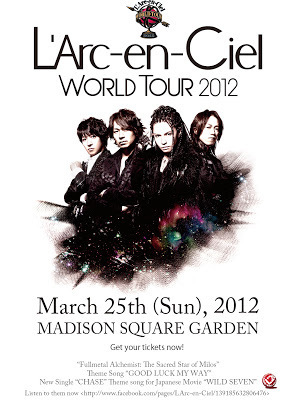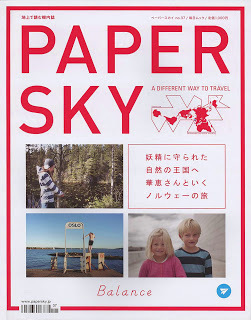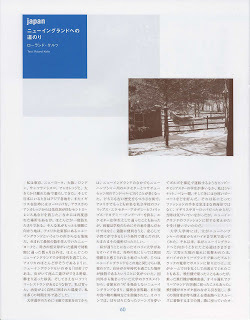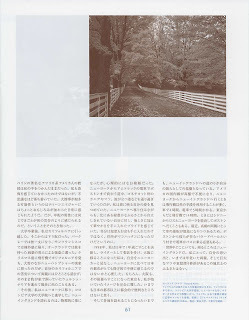Roland Kelts's Blog, page 61
January 19, 2012
Global Salon Japan video simulcast
Tonight's PEN/WNYC Japan event--"The Global Salon: Cities in Japan"--is apparently sold out, but it will be video simulcast and archived online here.
Starts at 7 p.m. EST/4 p.m. PST/9 a.m. JST.
Updated info below.

THE GLOBAL SALON: CITIES IN JAPAN
In collaboration with PEN World Voices Festival
Thursday, January 19, 2012
7:00 PM
Sold Out
Recommend
Share
Duration: 1 hour, 30 minutes
Venue: The Greene Space
44 Charlton Street, New York, NY
(corner of Varick Street)
The Global Salon: JAPAN presents compelling stories of courage and resiliency, while the country continues to face unprecedented hardships of increased suicidal rates and unemployment, before and after the Tsunami of 2011. Host Eddie Robinson will engage the audience and esteemed guests through captivating dialogue and enchanting musical themes about the country's economic future, advances in technology, and the preservation of its remarkable culture.
Conversation and Performance with
Keiko Matsui An icon of contemporary jazz. With nearly 1.2 million units sold in the U.S. alone and packed concert halls, she is one of the most recognized artists in the genre. Her elegant piano melodies and gentle jazz grooves have enormous appeal.
Akiko Yano, Japanese pop singer, has recorded with Pat Metheny, Thomas Dolby, The Chieftains, and The Yellow Magic Orchestra. Her singing style has been compared to contemporary English singer, Kate Bush. Akiko will collaborate with jazz icon, Keiko Matsui in an exclusive duet, together for the first time!
Ian Buruma, British-Dutch writer and academic who worked as a journalist, and spent much of his early writing career travelling and reporting from all over Asia. He has written such books as "God's Dust: A Modern Asian Journey," "Behind the Mask" and "The Wages of Guilt: Memories of War in Germany and Japan."
Roland Kelts, half-Japanese American writer, editor and lecturer, lives half of each year in Tokyo and New York. He is the author of "Japanamerica: How Japanese Pop Culture has Invaded the US," writes about contemporary Japan for several publications in the US and Japan, and is a frequent commentator on Japan for National Public Radio and the BBC.
Mr Yasuhisa Kawamura, Deputy Chief of Mission at the Consulate General of Japan in New York. He began his foreign service career in Washington D.C.(1984-6), and since then served in various countries, including Geneva, Jakarta (Indonesia), Brussels. Since his arrival in New York in 2010, he has played a crucial role working as a bridge between New Yorkers and the Japanese community.
Published on January 19, 2012 12:30
January 13, 2012
Kitty says Hello to Mr Men
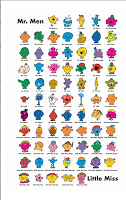

My chat with Hugo Macdonald of Monocle 24's 'Midori House' starts at 37:00 here.
Kitty, of course, was born in London.
Published on January 13, 2012 14:50
January 10, 2012
Meet Akiko Naka, Japanese IT entrepreneur @ 27!
Modestly hopeful profile for The Christian Science Monitor
Thirty ideas from people under 30: The Entrepreneurs
The Monitor interviewed young artisans, politicians, educators, entrepreneurs and faith leaders. And they have trenchant suggestions on how to improve the world. We'll serve this smorgasbord in bite-size servings of 3 to 7 profiles per day. Today's lineup of entrepreneurs includes a Mexican rain man, an Indian bike rental exec, and a Japanese web business recruiter.
- Monitor staff and correspondents
1 and 8



Enlarge
Akiko Naka, founder of wantedly.com in Japan. (Yuka Yamaguchi)
Akiko Naka: Japan's high-tech recruiter
In Japan, 27-year-old Akiko Naka is a triple threat: an independent IT entrepreneur in a culture that prizes conformity, a successful young professional where status is still rooted in age-based hierarchies, and a fluently bilingual and bicultural businessperson in a mono-ethnic and largely monolingual nation.
Oh, and she's a she – a successful female in a corporate culture that remains very much a man's domain.
Ms. Naka was born in Japan but spent part of her childhood in North Carolina, where her mother was teaching at Duke University. In her mid-teens, she went to school in New Zealand for three years. She returned to Japan to study economics at Kyoto University. A stint with Goldman Sachsfollowed – and turned her off to the sclerotic financial industry for good.
"Lehman Brothers went bust, and so many of my colleagues left the company," she says. "I realized that I wasn't happy anyway. I wanted to do something more creative, to go from zero to 100 on my own."
Naka left Goldman and devoted six months to launching her own website, magajin.com. Then she met Taro Kodama, in charge of starting Facebook in Japan. He recognized her talent, but she wasn't ready to commit.
"We agreed that I'd spend 50 percent of my time on Facebook and 50 percent on my own site. I learned so much from Facebook about leveraging social media and financial stability."
Now she has created wantedly.com, a bilingual social recruitment service. "I believe that people are becoming free agents, working as a group on small projects, then leaving and working on other projects. My idea is to promote a new lifestyle based on projects, rather than recruit for companies. I think that's how people will start working."
– Roland Kelts, Tokyo
Published on January 10, 2012 11:35
January 3, 2012
It's official: L'Arc storms MSG in March
Published on January 03, 2012 22:27
December 27, 2011
Sexless Japan
Story for The Guardian with mysteriously missing grafs:

Japan leads the way in sexless love
Are a new generation
of Japanese men really losing interest in sex? And if so, what's behind the
malaise?

It's not easy being a
young man in Japan today. Every few months sees the release of a
new set of stats and stories trumpeting the same meme: today's
Japanese men are unmanly – and worse, they don't seem bothered by it.
Tagged in the domestic
media over the past few years as hikikomori (socially withdrawn boys), soshoku
danshi (grass-eating/herbivore
men, uninterested in meat, fleshly sex and physical or workplace competition), or
just generally feckless, Japan's Y-chromosomed youth today elicit shrugs of
"why?", followed by sighs of disappointment from their
postwar elders and members of the opposite sex. With the country's economy
stagnant at best, its geopolitical foothold rapidly slipping into the crevice
between China and the United States, and its northeast coastline still
struggling with the aftermath of disaster and an ongoing nuclear crisis, the
reaction to a failure of Japan's men to take the reins, even symbolically, has
evolved from whispers of curiosity to charges of incompetence.
In the most recent government study, published at the end of last
month, the percentage of unmarried men spiked 9.2 points from five years ago.
More telling: 61% of those unwed men reported not having a girlfriend, and 45%
said they couldn't care less about finding one.
What gives? As anyone
who has watched Japanese or
Korean pop videos knows, the popular
image of men in Asia, seen from a western perspective, is more effeminate than
macho, rife with makeup, stylised hairdos and choreographed dance steps. Even
so-called punks in Japan lean more to Vivienne Westwood than Malcolm McLaren –
more familiar with fashion spreads than the spitting in the street.
And yet Japan was rebuilt from the ashes of
the second world war into an economic and technological powerhouse with
historically unprecedented speed on the backs of labourers, mainly men, laying
the rails of the nation's astonishing bullet train, for example.
Why the generational
malaise and indifference to sex?
Theories abound.
The most provocative to me, a Japanese-American and longtime Tokyo resident, is
that Japanese women have become stronger socially and economically at the very
same time that Japanese men have become more mole-ish and fully absorbed in virtual worlds,
satiated by the very technological wizardry their fore bears foisted upon them,
and even preferring it to
reality.
"I don't like real women," one bloke superciliously
sniffed on Japan's 2channel, the world's largest and most active internet
bulletin board site. "They're too picky nowadays. I'd much rather have a
virtual girlfriend."
Virtual girlfriends
became a sensation last summer, when Japanese game-maker Konami released its
second-generation of its popular Love Plus, called, aptly, Love Plus +, for the
Nintendo DS gaming system. Konami skillfully arranged for an otherwise deadbeat
beach resort town called Atami to host a Love Plus + holiday weekend. Players
were invited to tote their virtual girlfriends, via the gaming console, to the
actual resort town to cavort for a weekend in romantic bliss. The promotion was absurdly successful, with local resort operators reporting
that it was their best weekend in decades.
I tried to explain the
phenomenon via a TV interview for a US cable station: the men who spent
their yen on a weekend of romance with a digital lover were a subset of a
subculture many times removed from mainstream Japan. They are known as otaku, or hyper-obsessive and often asocial men who
seek solace in imaginary worlds (not unlike many artists and writers, I should
add). Nevertheless, these were clearly young Japanese men of a generation that
found the imperfect or just unexpected demands of real-world relationships with
women less enticing than the lure of the virtual libido. You can't have sex
with a digital graphic, but you can get sexually excited, and maybe satisfied,
by one.
The displacement of the male libido onto virtual realities is hardly new or strictly Japanese. The Internet has made porn, and sex, just another option for men in advanced economies.
In 2004, American feminist writer Naomi Wolf wrote in New York magazine that "the onslaught of [Internet] porn is responsible for deadening male libido in relation to real women, and leading men to see fewer and fewer women as 'porn-worthy.'" Earlier this year, the same magazine, in a story titled, "He's Just Not That Into Anyone," voiced the concerns of a young American man who discovered that he was faking orgasms with real women—largely because they were less satisfying than online offerings.
Last week, the tanking marriage rate in the US cast the entire institution, and concept, into question--especially for men with receding incentives.
The phrase
"herbivore men" was coined by a female Japanese
journalist in 2006. By 2009, the Japanese male's lack of ambition,
sexually or otherwise, had become a media meme. With the latest reports in
Japan, of men who can't get it up for real women who won't get married or have
kids, the mutual gender-chill
phenomenon has become mainstream. It may be the future, but is it really
Japanese?
"Maybe we're just advanced human
beings," says a Japanese friend of mine over dinner this week in Tokyo,
who won't let me use her real name. She is an attractive, 40-something editor
at one of Japan's premier fashion magazines, and she is still single. "Maybe,"
she adds, "we've learned how to service ourselves."
Published on December 27, 2011 22:24
December 22, 2011
L'Arc~en~Ciel go global in 2012--via anime
Last column for the
Yomiuri
in 2011:
SOFT POWER HARD TRUTHS / L'Arc-en-Ciel blaze a global anime music trail
Roland Kelts / Special to The Daily Yomiuri
On my way into Kyocera Osaka Dome earlier this month, I passed a handful of young people of both sexes sporting dreadlocks, blousy shirts and kabuki-style white makeup. They were cosplaying as hyde, the coy lead singer of L'Arc~en~Ciel, the Japanese rock superstars who were about to go onstage.
I felt like I might have been at an anime convention in the United States--there were also a few women dressed as maids--but this was a rock concert first and a cosplay blowout second.
L'Arc~en~Ciel are now entering their 20th year of record-busting CD sales and sold-out concerts. I watched them perform two shows, with 40,000 seats all going at 9,000 yen a pop. The events were expertly paced and ludicrously high-tech--what you'd expect from a Japanese production that mixes carefully planned moments of seeming candor with expert efficiency.

Vocalist hyde live in Osaka
"In the beginning, L'Arc's music was associated with anime," the band's manager Masahiro Oishi told me in a backstage interview. "But through experiencing the band's music directly, fans in several countries gradually came to recognize the band's worth based on its music alone. They have become genuine fans of L'Arc's music, whether or not they like anime."
J-pop and J-rock's connection to anime has long been both a burden and an opportunity. In the 1970s and '80s, anime soundtracks were heavily localized to attract American viewers, just as the anime narratives were butchered to fit expectations shaped by Hollywood and television.
But in the late '90s and early 2000s, the Internet connected global fans to Japanese creators with an immediacy that transcended distance. An edited Pokemon or Naruto episode was no longer acceptable. Original songs, written and sung by Japanese artists, were prized as a sign of authenticity.
American fans who knew no Japanese could still sing along with songs written and sung by Japanese bands like L'Arc.
L'Arc saw an opportunity in 2004 and had themselves booked at Otakon, the largest anime convention on the East Coast, for a live show at Baltimore's 1st Mariner Arena. The venue's 12,000 seats sold out fast. Enthusiasm for the pairing of Japanese rock and anime was infectious.
"Nobody had tried anything like this [in the United States] before, certainly not on that scale," Otakon director Jim Vowles said. "But the announcement triggered a weeklong wave of Internet buzz, including buzz in Japan. And the show itself was fantastic and over-the-top, a real once-in-a-lifetime event. The reaction was overwhelmingly positive. People are still talking about that gig, almost a decade later."
Meanwhile, Japan's pop culture industries are facing an unpleasant but unavoidable truth: Growth at home is no longer possible. A chronically low birthrate and unstable economy guarantee that. And competition from South Korea and China is making Japanese pop culture producers increasingly antsy about their futures.
"Even before the global media started picking up on the band," Oishi noted, "the number of our visitors on YouTube went over several million, the Facebook fansites of each region grew bigger, and we are now receiving numerous requests for live concerts directly from fans. There is no way for us to not do it now."
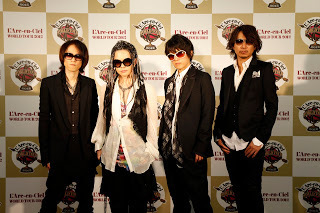
L'Arc~en~Ciel backstage at Kyocera Osaka Dome, Dec. 4
L'Arc released two singles this fall and winter, the hard-driving "Chase" and the infectious "X X X (Kiss Kiss Kiss)," and they are currently finishing a new studio album. Next year, they will embark on their first world tour, with stops in Europe, the United States and Asia.
Their song "Good Luck My Way" is featured on the soundtrack of the latest Fullmetal Alchemist anime film, presented by Funimation at screenings across North America in January.
"We don't make any distinction between our otaku fans and our rock fans," hyde tells me. "We want them both, and we want to make them happy. I love Evangelion, for example. But I also love Depeche Mode and Duran Duran."
Other band members cite Pink Floyd, Jeff Buckley and Motley Crue drummer Tommy Lee as critical influences. In short, they offer a smorgasbord of Western influences, served up Japanese-style, with genuine talent.
But is that enough to tie together the West's rock and anime audiences in competitive markets like New York and London? We'll likely learn in 2012. Bassist tetsuya, a founding member, thinks the band has something unique to offer.
"We do the best show we can each time out, whether the venue is in Japan or elsewhere. We may not be able to do the same show with the same resources in the U.S. and Europe, but performance-wise, we'll make it special."
Otakon's Vowles believes that Japanese bands can succeed overseas--especially if they are willing to honor their anime fans.
"Ever since that show in 2004, the bar has been raised considerably for fandom, and while there have been some awesome moments since, it remains a high point in our history," he says. "For Otakon, it made music a major element in our event going forward, and that had ripple effects throughout the anime convention world."
===
Kelts, a visiting scholar at the University of Tokyo, is the author of "Japanamerica: How Japanese Pop Culture has Invaded the U.S." (www.japanamericabook.com) and the forthcoming novel, "Access."
SOFT POWER HARD TRUTHS / L'Arc-en-Ciel blaze a global anime music trail
Roland Kelts / Special to The Daily Yomiuri
On my way into Kyocera Osaka Dome earlier this month, I passed a handful of young people of both sexes sporting dreadlocks, blousy shirts and kabuki-style white makeup. They were cosplaying as hyde, the coy lead singer of L'Arc~en~Ciel, the Japanese rock superstars who were about to go onstage.
I felt like I might have been at an anime convention in the United States--there were also a few women dressed as maids--but this was a rock concert first and a cosplay blowout second.
L'Arc~en~Ciel are now entering their 20th year of record-busting CD sales and sold-out concerts. I watched them perform two shows, with 40,000 seats all going at 9,000 yen a pop. The events were expertly paced and ludicrously high-tech--what you'd expect from a Japanese production that mixes carefully planned moments of seeming candor with expert efficiency.

Vocalist hyde live in Osaka
"In the beginning, L'Arc's music was associated with anime," the band's manager Masahiro Oishi told me in a backstage interview. "But through experiencing the band's music directly, fans in several countries gradually came to recognize the band's worth based on its music alone. They have become genuine fans of L'Arc's music, whether or not they like anime."
J-pop and J-rock's connection to anime has long been both a burden and an opportunity. In the 1970s and '80s, anime soundtracks were heavily localized to attract American viewers, just as the anime narratives were butchered to fit expectations shaped by Hollywood and television.
But in the late '90s and early 2000s, the Internet connected global fans to Japanese creators with an immediacy that transcended distance. An edited Pokemon or Naruto episode was no longer acceptable. Original songs, written and sung by Japanese artists, were prized as a sign of authenticity.
American fans who knew no Japanese could still sing along with songs written and sung by Japanese bands like L'Arc.
L'Arc saw an opportunity in 2004 and had themselves booked at Otakon, the largest anime convention on the East Coast, for a live show at Baltimore's 1st Mariner Arena. The venue's 12,000 seats sold out fast. Enthusiasm for the pairing of Japanese rock and anime was infectious.
"Nobody had tried anything like this [in the United States] before, certainly not on that scale," Otakon director Jim Vowles said. "But the announcement triggered a weeklong wave of Internet buzz, including buzz in Japan. And the show itself was fantastic and over-the-top, a real once-in-a-lifetime event. The reaction was overwhelmingly positive. People are still talking about that gig, almost a decade later."
Meanwhile, Japan's pop culture industries are facing an unpleasant but unavoidable truth: Growth at home is no longer possible. A chronically low birthrate and unstable economy guarantee that. And competition from South Korea and China is making Japanese pop culture producers increasingly antsy about their futures.
"Even before the global media started picking up on the band," Oishi noted, "the number of our visitors on YouTube went over several million, the Facebook fansites of each region grew bigger, and we are now receiving numerous requests for live concerts directly from fans. There is no way for us to not do it now."

L'Arc~en~Ciel backstage at Kyocera Osaka Dome, Dec. 4
L'Arc released two singles this fall and winter, the hard-driving "Chase" and the infectious "X X X (Kiss Kiss Kiss)," and they are currently finishing a new studio album. Next year, they will embark on their first world tour, with stops in Europe, the United States and Asia.
Their song "Good Luck My Way" is featured on the soundtrack of the latest Fullmetal Alchemist anime film, presented by Funimation at screenings across North America in January.
"We don't make any distinction between our otaku fans and our rock fans," hyde tells me. "We want them both, and we want to make them happy. I love Evangelion, for example. But I also love Depeche Mode and Duran Duran."
Other band members cite Pink Floyd, Jeff Buckley and Motley Crue drummer Tommy Lee as critical influences. In short, they offer a smorgasbord of Western influences, served up Japanese-style, with genuine talent.
But is that enough to tie together the West's rock and anime audiences in competitive markets like New York and London? We'll likely learn in 2012. Bassist tetsuya, a founding member, thinks the band has something unique to offer.
"We do the best show we can each time out, whether the venue is in Japan or elsewhere. We may not be able to do the same show with the same resources in the U.S. and Europe, but performance-wise, we'll make it special."
Otakon's Vowles believes that Japanese bands can succeed overseas--especially if they are willing to honor their anime fans.
"Ever since that show in 2004, the bar has been raised considerably for fandom, and while there have been some awesome moments since, it remains a high point in our history," he says. "For Otakon, it made music a major element in our event going forward, and that had ripple effects throughout the anime convention world."
===
Kelts, a visiting scholar at the University of Tokyo, is the author of "Japanamerica: How Japanese Pop Culture has Invaded the U.S." (www.japanamericabook.com) and the forthcoming novel, "Access."
Published on December 22, 2011 16:39
December 20, 2011
December 19, 2011
Another England
Published on December 19, 2011 03:39
December 17, 2011
On US Anime Cons for JP Foundation's WOCHI KOCHI
Yumiko Sakuma nails the scene:
進化するコスプレ、マンガとアニメが世界を席巻する
ローランド・ケルツ
トマ・シルデ
マーク・ペレス
福岡俊弘
今、海外のアニメ・コンベンションが、猛烈な勢いで人気を増している。
アメリカでは年間に200以上のコンベンションが開催され、ヨーロッパでも2000年にパリで初めて開催された<ジャパン・エキスポ >を筆頭に、東西南北に広がりを見せている。最初の年に3200人が参加した<ジャパン・エキスポ>の2011年の入場者数が19万2000人だったといえば、その勢いの凄まじさをわかっていただけるだろうか。欧米だけではない。ブラジルでは年に2度<アニメ・フレンズ
>を筆頭に、東西南北に広がりを見せている。最初の年に3200人が参加した<ジャパン・エキスポ>の2011年の入場者数が19万2000人だったといえば、その勢いの凄まじさをわかっていただけるだろうか。欧米だけではない。ブラジルでは年に2度<アニメ・フレンズ >が開催されている。インドでは2011年に<インド・アニメ・コンベンション
>が開催されている。インドでは2011年に<インド・アニメ・コンベンション >が幕を開け、2万人の入場者を集めた。中国では、2011年11月に日中両政府の共催で<日本アニメ・フェスティバル
>が幕を開け、2万人の入場者を集めた。中国では、2011年11月に日中両政府の共催で<日本アニメ・フェスティバル >が開幕したが、来年は国交正常化40周年とあって、さらなる盛り上がりが期待できそうだ。東南アジアでも、2007年にはじまったベトナムの<アクティブ・エクスポ
>が開幕したが、来年は国交正常化40周年とあって、さらなる盛り上がりが期待できそうだ。東南アジアでも、2007年にはじまったベトナムの<アクティブ・エクスポ >など、コスプレを中心に徐々にイベントの数が増えている。
>など、コスプレを中心に徐々にイベントの数が増えている。
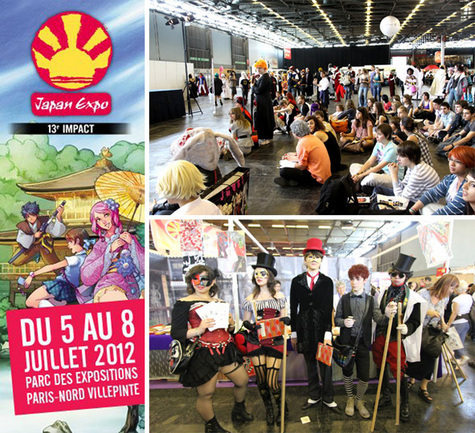
<ジャパン・エキスポ>フランス・パリ

<アクティブ・エクスポ>ベトナム・ハノイ
日本のポップカルチャーに詳しく、「ジャパナメリカ 日本発ポップカルチャー革命 」の著者であるローランド・ケルツ氏が解説する。
」の著者であるローランド・ケルツ氏が解説する。
「フランスで最初に火がつき、アメリカが後を追った。その後ろに、南米、スペイン、イギリスなどがついてきているという印象です」
90年代にはステレオタイプ化することができた海外のアニメファンだが、2000年代中盤から一気に多様化した。たとえばアメリカの「アニメファン」といえば、アジア系アメリカ人や白人の男性が中心で、日本でいうところの「オタク」のイメージに近い若者が主流だった。
「今<ニューヨーク・アニメ・フェスティバル >では、アフリカ系アメリカ人、ヒスパニック、ヨーロッパ人が優勢で、むしろアメリカの白人は少数派になっています(ケルツ氏)」
>では、アフリカ系アメリカ人、ヒスパニック、ヨーロッパ人が優勢で、むしろアメリカの白人は少数派になっています(ケルツ氏)」
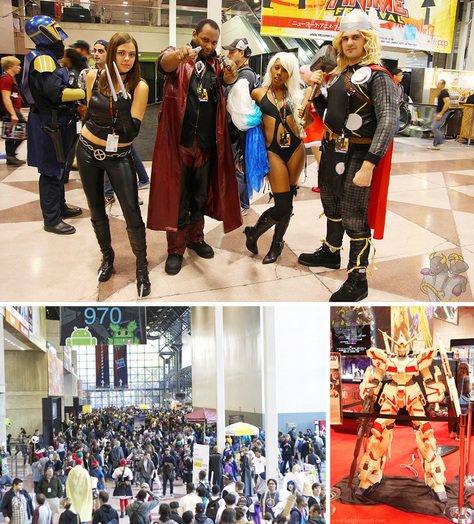
<ニューヨーク・アニメ・フェスティバル>アメリカ・ニューヨーク
アメリカ最大のコンベンション、ロサンゼルスの<アニメ・エキスポ >を運営するソサイエティ・フォー・ザ・プロモーション・オブ・ジャパニーズ・アニメーション(SPJA)
>を運営するソサイエティ・フォー・ザ・プロモーション・オブ・ジャパニーズ・アニメーション(SPJA) のCEOであるマーク・ペレス氏によると、西海岸では、2000年頃には圧倒的に多かった男性客の割合が、入場者の増加とともにどんどん低下し、今ではやや女性客のほうが多くなった。2011年には、過去最高の12万人を動員した。
のCEOであるマーク・ペレス氏によると、西海岸では、2000年頃には圧倒的に多かった男性客の割合が、入場者の増加とともにどんどん低下し、今ではやや女性客のほうが多くなった。2011年には、過去最高の12万人を動員した。
「白人、ヒスパニックやネイティブ・アメリカンが多く、アジア系アメリカンが占める割合が低下しています(ペレス氏)」

<アニメ・エキスポ>アメリカ・ロサンジェルス
女性客が増えているのは、パリの<ジャパン・エキスポ >でも同様だ。創立者のひとりであるトマ・シルデ氏が語る。
>でも同様だ。創立者のひとりであるトマ・シルデ氏が語る。
「オープン当初は、参加者のほとんどが男性だった。2006年頃から音楽やファッションを通じて日本文化を発見した女性たちが急激に増え、今では少女漫画が小さなブームになりつつあります」

<ジャパン・エキスポ>フランス・パリ
海外のアニメ・コンベンションが急速に広がっている理由に、若者たちの間でコスプレが圧倒的に支持されていること、そしてコスプレファンの間で、出会いの場、コミュニティが集まる場として機能していることがある。 「アメリカの田舎では、インターネットでアニメと出会った若者たちが、地元で仲間を探し、車を共同で借りて、アニメ・コンベンションに出かけていく。彼らが求めているのは、日常生活からの逃避です。コンベンションの開催期間中は、コスプレでキャラクターに扮することで、自分自身になることができる。そこには自分と同じことに興味をもった人たちで形成されるコミュニティがあって、理解しあうことができるのです(ケルツ氏)」
週間アスキー の元総副編集長で、<Tokyo Kawaii Magazine
の元総副編集長で、<Tokyo Kawaii Magazine >の編集長、福岡俊弘氏は2009年に初めてパリの<ジャパン・エキスポ>を訪れて以来、バルセロナ、マルセイユ、ニューヨーク、バルチモア、ロサンゼルスなど数々のコンベンションに足を運んできた。
>の編集長、福岡俊弘氏は2009年に初めてパリの<ジャパン・エキスポ>を訪れて以来、バルセロナ、マルセイユ、ニューヨーク、バルチモア、ロサンゼルスなど数々のコンベンションに足を運んできた。
「コスチュームに身を包んだ人々が電車に乗ってコンベンションに向かい、会場にはいたるところで撮影隊が写真を撮っている。日本のアニメ文化がこれだけ受け入れられていること、そしてその自由な雰囲気に驚きました」
日本のイベントといえば、コミックマーケット(コミケ) が代表的で、3日間で60万人を動員するが、同人誌販売が中心で、コスプレがメインではないのが大きな違い。海外のコンベンションでは、たとえば<アニメ・エクスポ>では参加者の75%が少なくとも1日はコスプレに参加するというくらい、コスプレ文化が浸透している。 海外でのコスプレブームに呼応する形で、日本でもコスプレ専門のイベントがある。2003年から名古屋で行われている<世界コスプレサミット
が代表的で、3日間で60万人を動員するが、同人誌販売が中心で、コスプレがメインではないのが大きな違い。海外のコンベンションでは、たとえば<アニメ・エクスポ>では参加者の75%が少なくとも1日はコスプレに参加するというくらい、コスプレ文化が浸透している。 海外でのコスプレブームに呼応する形で、日本でもコスプレ専門のイベントがある。2003年から名古屋で行われている<世界コスプレサミット >だ。ブラジルには<ワールド・コスプレ・サミット
>だ。ブラジルには<ワールド・コスプレ・サミット >という予選が行われているし、各地のコンベンションで予選を行うこともある。昨年は<世界コスプレサミット>の優勝者がベトナムを訪れたり、コスプレを通じた国際交流も盛んになってきた。
>という予選が行われているし、各地のコンベンションで予選を行うこともある。昨年は<世界コスプレサミット>の優勝者がベトナムを訪れたり、コスプレを通じた国際交流も盛んになってきた。
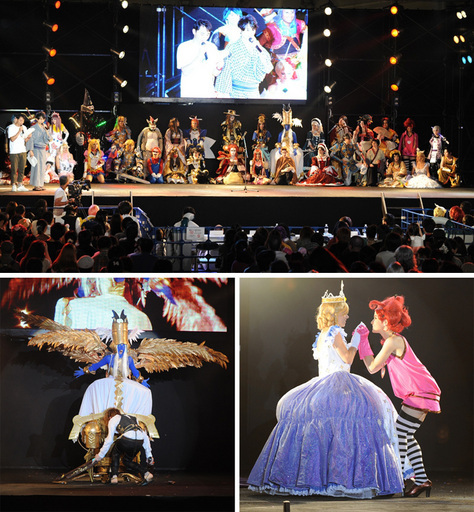
<世界コスプレサミット>日本・名古屋
海外でちょっとしたブームを巻き起こしているコスプレだが、国や地域によって、アプローチが微妙に違うのも興味深い。
「メリーランド州バルチモアで行われる<オタコン >では『鋼の錬金術師
>では『鋼の錬金術師 』のマスタング大佐が死ぬシーンを、電話ボックス付きのコスプレで表現している人が拍手喝采を浴びていた。パフォーマンス性が高いアメリカのファンに対し、パリのファンは、原作に対するリスペクトから、キャラクターに忠実であることをよしとする。パリとアメリカの間には、競争心のようなものもあるようですよ(福岡氏)」
』のマスタング大佐が死ぬシーンを、電話ボックス付きのコスプレで表現している人が拍手喝采を浴びていた。パフォーマンス性が高いアメリカのファンに対し、パリのファンは、原作に対するリスペクトから、キャラクターに忠実であることをよしとする。パリとアメリカの間には、競争心のようなものもあるようですよ(福岡氏)」

<オタコン>アメリカ・ニューヨーク
お国柄が現れるのはコスプレだけではない。
「スペインでは2010年の書籍のベストセラー・ランキングの1位が村上春樹だったほどの日本ブームが起きている。アニメでは『クレヨンしんちゃん 』が老若男女問わず知名度が高い。マルセイユでは、カラオケ大会がメインのイベントで、来場者たちがポケモン
』が老若男女問わず知名度が高い。マルセイユでは、カラオケ大会がメインのイベントで、来場者たちがポケモン の主題歌を日本語で合唱する姿を目撃しました。また海外で最初に初音ミク
の主題歌を日本語で合唱する姿を目撃しました。また海外で最初に初音ミク の存在を感知したのは、ハワイの<カワイイコン
の存在を感知したのは、ハワイの<カワイイコン >だったんです(福岡氏)」
>だったんです(福岡氏)」
ニューヨークの<アニメ・フェスティバル>が、都会の日常のなかでふらりと出かける気楽なイベントである一方で、ロスの<アニメ・エクスポ>は、年に一度、気合を入れたコスプレイヤーたちが全米やカナダからやってくる巨大なお祭り。シアトルでは、若者から中年まで様々な世代がコスプレを楽しむ。パリでは<NARUTO-ナルト >や<ONE PIECE
>や<ONE PIECE >、ロスでは<BLEACH
>、ロスでは<BLEACH >、<Axis Powers ヘタリア
>、<Axis Powers ヘタリア >というように、人気の作品も微妙に異なる。福岡氏のコメントからもわかるように、スペインの<サロン・デル・マンガ
>というように、人気の作品も微妙に異なる。福岡氏のコメントからもわかるように、スペインの<サロン・デル・マンガ >では、「クレヨンしんちゃん
>では、「クレヨンしんちゃん 」や「うる星やつら
」や「うる星やつら 」など、懐かしいアニメのコスプレをしたスペイン人と会えるという。
」など、懐かしいアニメのコスプレをしたスペイン人と会えるという。
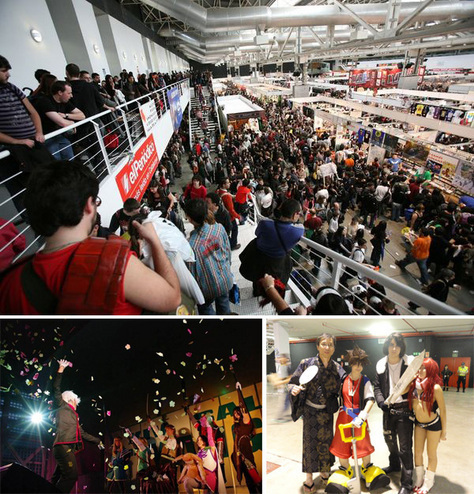
<サロン・デル・マンガ>スペイン・バルセロナ
海外のファンたちは、漫画やアニメの情報をどうやって得ているのだろうか?
<ジャパン・エキスポ>のシルデ氏によると、フランスでは漫画作品が流行するためには、フランス語の翻訳版が出版される必要がある。一方、アメリカでは、合法な過程で流通に乗らなくても、インターネットを介して情報がやり取りされ、正式に英語化される前に火がつくこともある。
「アニメを視聴する人口は増えていますが、そのぶん、違法のメディアを無料で視聴する層も増えている。これはひとつの課題です(ペレス氏)」
「インターネットの力は大きい。オンラインのコミュニティが存在して、アニメがインターネットにアップされると、1日、2日という時間で字幕がつく。メジャーな流通に乗っていないからこそ、ソーシャルの力が働きやすいのかもしれません(福岡氏)」
今のところ、前述したメジャー作品の人気が圧倒的とはいえ、現在日本で支持を集める「進撃の巨人 」や「君に届け
」や「君に届け 」などがアメリカでブレイクする日も遠くないのかもしれない。
」などがアメリカでブレイクする日も遠くないのかもしれない。
日本のアニメがこれだけ受け入れられる理由はなんなのだろうか。福岡氏は<オタコン>を訪れた際に、「NANA 」の大ファンだというアフリカ系アメリカ人の女性に話を聞いた。
」の大ファンだというアフリカ系アメリカ人の女性に話を聞いた。
「聞いてみると、女性がはまれるエンターテイメントはアメリカには意外と少ないというんです。『NANA』は日本の物語ですが、田舎から都会に出る女性の成功物語であり、女性同士の友情や恋愛といったユニバーサルな要素がたくさんある」
「日本の漫画やアニメは、大人にも子供にもアピールする点を併せ持っている。アニメーションの側面が子供を惹きつけ、大人が楽しむためのストーリー性やアクションがある。アメコミとの最大の違いはそこです(ペレス氏)」。
アニメ・コンベンションの関係者たちは、将来をどう見通しているのだろうか。
「今後想像できるのは、日本のアニメに気がついたアメリカの映画スタジオが、たとえば宮崎駿 氏のような日本のアニメのクリエーターとタッグを組むこと。日米共同の作品が見られるかもしれません(ケルツ氏)」
氏のような日本のアニメのクリエーターとタッグを組むこと。日米共同の作品が見られるかもしれません(ケルツ氏)」
「クオリティの伴った拡大を目指しています。参加者が安心して楽しめると同時に、企業にもアピールするコンベンションとして成長していきたい(ペレス氏)」
ファッション、音楽、食など、多岐にわたるプログラムで他のコンベンションと違う<ジャパン・エキスポ>のシルデ氏はこう語る。
「<ジャパン・エキスポ>の入場者の大半はアニメファンですが、アニメを通じて日本文化と出会い、日本のことをもっと知りたいと望むファンも多い。アニメ以外の文化に興味を持ってもらうことがひとつの目標です」
 ローランド・ケルツ
ローランド・ケルツ
アメリカ人の父親と日本人の母親の間に生まれ、アメリカと日本で育つ。オーバリン大学、コロンビア大学を卒業後、ニューヨーク大学、ラトガーズ大学、バーナード大学などの教壇に立つ。アメリカでは「プレイボーイ」「サロン」「ヴィレッジ・ヴォイス」「コスモポリタン」「ヴォーグ」などの雑誌や新聞に寄稿する。現在は東京とニューヨークを数ヶ月ずつ行ったり来たりしている。著書に「ジャパナメリカ 日本発ポップカルチャー革命」がある。

 トマ・シルデ
トマ・シルデ
1979年フランス生まれ。ビジネス・スクールを卒業後、音楽系出版社勤務を経て、複数のパートナーとともに<ジャパン・エクスポ>の創設にかかわり、2000年の第一回開催に尽力する。2004年には漫画の出版社<Taïfu Comics>を、2009年にはポップ・カルチャーのイベント<コミック・コン・パリ>を創立するなど精力的に活動する。現在は<ジャパン・エクスポ>のバイス・プレジデントを務める。http://www.japan-expo.com/

 マーク・ペレス
マーク・ペレス
大学時代に友人の誘いでアニメのクラブに参加して<カウボーイビバップ>と出会ってアニメに興味を持ち、2002年から<アニメ・エクスポ>にボランティアとして参加。2004年からスタッフに加わり、2007年には<アニメ・エクスポ>を運営するソサイエティ・フォー・ザ・プロモーション・オブ・ジャパニーズ・アニメーション(SPJA)の役員会に迎えられ、2009年にCEOに就任。2010年に一度CEO職を退いたが、2011年に復職した。http://www.spja.org/

福岡俊弘
1957年生まれ。1989年アスキー(現:アスキー・メディアワークス)入社。 92 年よりパソコン情報誌「 EYE ・ COM 」編集長。 97年から『週刊アスキー』編集長を務めたほか、ふたつの雑誌の創刊にも携わる。2003年からは同誌編集人。現在はiPhoneで読む海外向けの雑誌アプリ<Tokyo Kawaii Magazine>の編集長を務める。
進化するコスプレ、マンガとアニメが世界を席巻する
ローランド・ケルツ
トマ・シルデ
マーク・ペレス
福岡俊弘
今、海外のアニメ・コンベンションが、猛烈な勢いで人気を増している。
アメリカでは年間に200以上のコンベンションが開催され、ヨーロッパでも2000年にパリで初めて開催された<ジャパン・エキスポ
 >を筆頭に、東西南北に広がりを見せている。最初の年に3200人が参加した<ジャパン・エキスポ>の2011年の入場者数が19万2000人だったといえば、その勢いの凄まじさをわかっていただけるだろうか。欧米だけではない。ブラジルでは年に2度<アニメ・フレンズ
>を筆頭に、東西南北に広がりを見せている。最初の年に3200人が参加した<ジャパン・エキスポ>の2011年の入場者数が19万2000人だったといえば、その勢いの凄まじさをわかっていただけるだろうか。欧米だけではない。ブラジルでは年に2度<アニメ・フレンズ >が開催されている。インドでは2011年に<インド・アニメ・コンベンション
>が開催されている。インドでは2011年に<インド・アニメ・コンベンション >が幕を開け、2万人の入場者を集めた。中国では、2011年11月に日中両政府の共催で<日本アニメ・フェスティバル
>が幕を開け、2万人の入場者を集めた。中国では、2011年11月に日中両政府の共催で<日本アニメ・フェスティバル >が開幕したが、来年は国交正常化40周年とあって、さらなる盛り上がりが期待できそうだ。東南アジアでも、2007年にはじまったベトナムの<アクティブ・エクスポ
>が開幕したが、来年は国交正常化40周年とあって、さらなる盛り上がりが期待できそうだ。東南アジアでも、2007年にはじまったベトナムの<アクティブ・エクスポ >など、コスプレを中心に徐々にイベントの数が増えている。
>など、コスプレを中心に徐々にイベントの数が増えている。
<ジャパン・エキスポ>フランス・パリ

<アクティブ・エクスポ>ベトナム・ハノイ
日本のポップカルチャーに詳しく、「ジャパナメリカ 日本発ポップカルチャー革命
 」の著者であるローランド・ケルツ氏が解説する。
」の著者であるローランド・ケルツ氏が解説する。「フランスで最初に火がつき、アメリカが後を追った。その後ろに、南米、スペイン、イギリスなどがついてきているという印象です」
90年代にはステレオタイプ化することができた海外のアニメファンだが、2000年代中盤から一気に多様化した。たとえばアメリカの「アニメファン」といえば、アジア系アメリカ人や白人の男性が中心で、日本でいうところの「オタク」のイメージに近い若者が主流だった。
「今<ニューヨーク・アニメ・フェスティバル
 >では、アフリカ系アメリカ人、ヒスパニック、ヨーロッパ人が優勢で、むしろアメリカの白人は少数派になっています(ケルツ氏)」
>では、アフリカ系アメリカ人、ヒスパニック、ヨーロッパ人が優勢で、むしろアメリカの白人は少数派になっています(ケルツ氏)」
<ニューヨーク・アニメ・フェスティバル>アメリカ・ニューヨーク
アメリカ最大のコンベンション、ロサンゼルスの<アニメ・エキスポ
 >を運営するソサイエティ・フォー・ザ・プロモーション・オブ・ジャパニーズ・アニメーション(SPJA)
>を運営するソサイエティ・フォー・ザ・プロモーション・オブ・ジャパニーズ・アニメーション(SPJA) のCEOであるマーク・ペレス氏によると、西海岸では、2000年頃には圧倒的に多かった男性客の割合が、入場者の増加とともにどんどん低下し、今ではやや女性客のほうが多くなった。2011年には、過去最高の12万人を動員した。
のCEOであるマーク・ペレス氏によると、西海岸では、2000年頃には圧倒的に多かった男性客の割合が、入場者の増加とともにどんどん低下し、今ではやや女性客のほうが多くなった。2011年には、過去最高の12万人を動員した。「白人、ヒスパニックやネイティブ・アメリカンが多く、アジア系アメリカンが占める割合が低下しています(ペレス氏)」

<アニメ・エキスポ>アメリカ・ロサンジェルス
女性客が増えているのは、パリの<ジャパン・エキスポ
 >でも同様だ。創立者のひとりであるトマ・シルデ氏が語る。
>でも同様だ。創立者のひとりであるトマ・シルデ氏が語る。「オープン当初は、参加者のほとんどが男性だった。2006年頃から音楽やファッションを通じて日本文化を発見した女性たちが急激に増え、今では少女漫画が小さなブームになりつつあります」

<ジャパン・エキスポ>フランス・パリ
海外のアニメ・コンベンションが急速に広がっている理由に、若者たちの間でコスプレが圧倒的に支持されていること、そしてコスプレファンの間で、出会いの場、コミュニティが集まる場として機能していることがある。 「アメリカの田舎では、インターネットでアニメと出会った若者たちが、地元で仲間を探し、車を共同で借りて、アニメ・コンベンションに出かけていく。彼らが求めているのは、日常生活からの逃避です。コンベンションの開催期間中は、コスプレでキャラクターに扮することで、自分自身になることができる。そこには自分と同じことに興味をもった人たちで形成されるコミュニティがあって、理解しあうことができるのです(ケルツ氏)」
週間アスキー
 の元総副編集長で、<Tokyo Kawaii Magazine
の元総副編集長で、<Tokyo Kawaii Magazine >の編集長、福岡俊弘氏は2009年に初めてパリの<ジャパン・エキスポ>を訪れて以来、バルセロナ、マルセイユ、ニューヨーク、バルチモア、ロサンゼルスなど数々のコンベンションに足を運んできた。
>の編集長、福岡俊弘氏は2009年に初めてパリの<ジャパン・エキスポ>を訪れて以来、バルセロナ、マルセイユ、ニューヨーク、バルチモア、ロサンゼルスなど数々のコンベンションに足を運んできた。「コスチュームに身を包んだ人々が電車に乗ってコンベンションに向かい、会場にはいたるところで撮影隊が写真を撮っている。日本のアニメ文化がこれだけ受け入れられていること、そしてその自由な雰囲気に驚きました」
日本のイベントといえば、コミックマーケット(コミケ)
 が代表的で、3日間で60万人を動員するが、同人誌販売が中心で、コスプレがメインではないのが大きな違い。海外のコンベンションでは、たとえば<アニメ・エクスポ>では参加者の75%が少なくとも1日はコスプレに参加するというくらい、コスプレ文化が浸透している。 海外でのコスプレブームに呼応する形で、日本でもコスプレ専門のイベントがある。2003年から名古屋で行われている<世界コスプレサミット
が代表的で、3日間で60万人を動員するが、同人誌販売が中心で、コスプレがメインではないのが大きな違い。海外のコンベンションでは、たとえば<アニメ・エクスポ>では参加者の75%が少なくとも1日はコスプレに参加するというくらい、コスプレ文化が浸透している。 海外でのコスプレブームに呼応する形で、日本でもコスプレ専門のイベントがある。2003年から名古屋で行われている<世界コスプレサミット >だ。ブラジルには<ワールド・コスプレ・サミット
>だ。ブラジルには<ワールド・コスプレ・サミット >という予選が行われているし、各地のコンベンションで予選を行うこともある。昨年は<世界コスプレサミット>の優勝者がベトナムを訪れたり、コスプレを通じた国際交流も盛んになってきた。
>という予選が行われているし、各地のコンベンションで予選を行うこともある。昨年は<世界コスプレサミット>の優勝者がベトナムを訪れたり、コスプレを通じた国際交流も盛んになってきた。
<世界コスプレサミット>日本・名古屋
海外でちょっとしたブームを巻き起こしているコスプレだが、国や地域によって、アプローチが微妙に違うのも興味深い。
「メリーランド州バルチモアで行われる<オタコン
 >では『鋼の錬金術師
>では『鋼の錬金術師 』のマスタング大佐が死ぬシーンを、電話ボックス付きのコスプレで表現している人が拍手喝采を浴びていた。パフォーマンス性が高いアメリカのファンに対し、パリのファンは、原作に対するリスペクトから、キャラクターに忠実であることをよしとする。パリとアメリカの間には、競争心のようなものもあるようですよ(福岡氏)」
』のマスタング大佐が死ぬシーンを、電話ボックス付きのコスプレで表現している人が拍手喝采を浴びていた。パフォーマンス性が高いアメリカのファンに対し、パリのファンは、原作に対するリスペクトから、キャラクターに忠実であることをよしとする。パリとアメリカの間には、競争心のようなものもあるようですよ(福岡氏)」
<オタコン>アメリカ・ニューヨーク
お国柄が現れるのはコスプレだけではない。
「スペインでは2010年の書籍のベストセラー・ランキングの1位が村上春樹だったほどの日本ブームが起きている。アニメでは『クレヨンしんちゃん
 』が老若男女問わず知名度が高い。マルセイユでは、カラオケ大会がメインのイベントで、来場者たちがポケモン
』が老若男女問わず知名度が高い。マルセイユでは、カラオケ大会がメインのイベントで、来場者たちがポケモン の主題歌を日本語で合唱する姿を目撃しました。また海外で最初に初音ミク
の主題歌を日本語で合唱する姿を目撃しました。また海外で最初に初音ミク の存在を感知したのは、ハワイの<カワイイコン
の存在を感知したのは、ハワイの<カワイイコン >だったんです(福岡氏)」
>だったんです(福岡氏)」ニューヨークの<アニメ・フェスティバル>が、都会の日常のなかでふらりと出かける気楽なイベントである一方で、ロスの<アニメ・エクスポ>は、年に一度、気合を入れたコスプレイヤーたちが全米やカナダからやってくる巨大なお祭り。シアトルでは、若者から中年まで様々な世代がコスプレを楽しむ。パリでは<NARUTO-ナルト
 >や<ONE PIECE
>や<ONE PIECE >、ロスでは<BLEACH
>、ロスでは<BLEACH >、<Axis Powers ヘタリア
>、<Axis Powers ヘタリア >というように、人気の作品も微妙に異なる。福岡氏のコメントからもわかるように、スペインの<サロン・デル・マンガ
>というように、人気の作品も微妙に異なる。福岡氏のコメントからもわかるように、スペインの<サロン・デル・マンガ >では、「クレヨンしんちゃん
>では、「クレヨンしんちゃん 」や「うる星やつら
」や「うる星やつら 」など、懐かしいアニメのコスプレをしたスペイン人と会えるという。
」など、懐かしいアニメのコスプレをしたスペイン人と会えるという。
<サロン・デル・マンガ>スペイン・バルセロナ
海外のファンたちは、漫画やアニメの情報をどうやって得ているのだろうか?
<ジャパン・エキスポ>のシルデ氏によると、フランスでは漫画作品が流行するためには、フランス語の翻訳版が出版される必要がある。一方、アメリカでは、合法な過程で流通に乗らなくても、インターネットを介して情報がやり取りされ、正式に英語化される前に火がつくこともある。
「アニメを視聴する人口は増えていますが、そのぶん、違法のメディアを無料で視聴する層も増えている。これはひとつの課題です(ペレス氏)」
「インターネットの力は大きい。オンラインのコミュニティが存在して、アニメがインターネットにアップされると、1日、2日という時間で字幕がつく。メジャーな流通に乗っていないからこそ、ソーシャルの力が働きやすいのかもしれません(福岡氏)」
今のところ、前述したメジャー作品の人気が圧倒的とはいえ、現在日本で支持を集める「進撃の巨人
 」や「君に届け
」や「君に届け 」などがアメリカでブレイクする日も遠くないのかもしれない。
」などがアメリカでブレイクする日も遠くないのかもしれない。日本のアニメがこれだけ受け入れられる理由はなんなのだろうか。福岡氏は<オタコン>を訪れた際に、「NANA
 」の大ファンだというアフリカ系アメリカ人の女性に話を聞いた。
」の大ファンだというアフリカ系アメリカ人の女性に話を聞いた。「聞いてみると、女性がはまれるエンターテイメントはアメリカには意外と少ないというんです。『NANA』は日本の物語ですが、田舎から都会に出る女性の成功物語であり、女性同士の友情や恋愛といったユニバーサルな要素がたくさんある」
「日本の漫画やアニメは、大人にも子供にもアピールする点を併せ持っている。アニメーションの側面が子供を惹きつけ、大人が楽しむためのストーリー性やアクションがある。アメコミとの最大の違いはそこです(ペレス氏)」。
アニメ・コンベンションの関係者たちは、将来をどう見通しているのだろうか。
「今後想像できるのは、日本のアニメに気がついたアメリカの映画スタジオが、たとえば宮崎駿
 氏のような日本のアニメのクリエーターとタッグを組むこと。日米共同の作品が見られるかもしれません(ケルツ氏)」
氏のような日本のアニメのクリエーターとタッグを組むこと。日米共同の作品が見られるかもしれません(ケルツ氏)」「クオリティの伴った拡大を目指しています。参加者が安心して楽しめると同時に、企業にもアピールするコンベンションとして成長していきたい(ペレス氏)」
ファッション、音楽、食など、多岐にわたるプログラムで他のコンベンションと違う<ジャパン・エキスポ>のシルデ氏はこう語る。
「<ジャパン・エキスポ>の入場者の大半はアニメファンですが、アニメを通じて日本文化と出会い、日本のことをもっと知りたいと望むファンも多い。アニメ以外の文化に興味を持ってもらうことがひとつの目標です」
 ローランド・ケルツ
ローランド・ケルツアメリカ人の父親と日本人の母親の間に生まれ、アメリカと日本で育つ。オーバリン大学、コロンビア大学を卒業後、ニューヨーク大学、ラトガーズ大学、バーナード大学などの教壇に立つ。アメリカでは「プレイボーイ」「サロン」「ヴィレッジ・ヴォイス」「コスモポリタン」「ヴォーグ」などの雑誌や新聞に寄稿する。現在は東京とニューヨークを数ヶ月ずつ行ったり来たりしている。著書に「ジャパナメリカ 日本発ポップカルチャー革命」がある。

 トマ・シルデ
トマ・シルデ1979年フランス生まれ。ビジネス・スクールを卒業後、音楽系出版社勤務を経て、複数のパートナーとともに<ジャパン・エクスポ>の創設にかかわり、2000年の第一回開催に尽力する。2004年には漫画の出版社<Taïfu Comics>を、2009年にはポップ・カルチャーのイベント<コミック・コン・パリ>を創立するなど精力的に活動する。現在は<ジャパン・エクスポ>のバイス・プレジデントを務める。http://www.japan-expo.com/


 マーク・ペレス
マーク・ペレス大学時代に友人の誘いでアニメのクラブに参加して<カウボーイビバップ>と出会ってアニメに興味を持ち、2002年から<アニメ・エクスポ>にボランティアとして参加。2004年からスタッフに加わり、2007年には<アニメ・エクスポ>を運営するソサイエティ・フォー・ザ・プロモーション・オブ・ジャパニーズ・アニメーション(SPJA)の役員会に迎えられ、2009年にCEOに就任。2010年に一度CEO職を退いたが、2011年に復職した。http://www.spja.org/


福岡俊弘
1957年生まれ。1989年アスキー(現:アスキー・メディアワークス)入社。 92 年よりパソコン情報誌「 EYE ・ COM 」編集長。 97年から『週刊アスキー』編集長を務めたほか、ふたつの雑誌の創刊にも携わる。2003年からは同誌編集人。現在はiPhoneで読む海外向けの雑誌アプリ<Tokyo Kawaii Magazine>の編集長を務める。
Published on December 17, 2011 04:47
December 10, 2011
Yer Lotus?
Japanese anime voice-over artist, Suwabe-san, drives a Lotus. Shouldn't you?
Tokyo Drift
Meet Junichi Suwabe—the kind of man who drives the city for pleasure.
By
Roland Kelts |
Photographs by
Sebastian Mayer
[image error]
[image error]Slideshow
[image error]
[image error]
Some nights after work, Junichi Suwabe likes to take the long way
home, adding an hour or so to his commute through Tokyo just for the
pleasure of driving. He courses over the elevated expressways encircling
the world's most populous city in his carbon grey Lotus Evora — one of
only 50 such models in the entirety of Japan — and takes in the view.
Tokyo at night is a luminous jumble of skyscrapers, flashing and
streaming neons, and flickering four-storey video screens stretching in
all directions, seemingly borderless. Seen via satellite, Tokyo is the
brightest city on earth.
"There are many places in Tokyo that are beautifully lit at night,"
Suwabe says, gesturing broadly toward the park and skyscrapers outside
his recording studio office. "And driving my Lotus is a real
mood-changer. Driving it past all those lights can really make me feel
much better."
Suwabe is something of a celebrity in his homeland, famous on sound
if not on sight. A seasoned voice actor and popular radio talk show
host, his rich, edgy baritone can be heard frequently throughout Japan
on television and movie voiceovers and in internationally renowned anime
series like Bleach, Gundam, and Vampire Knight — not to mention such
global video game megahits as Final Fantasy and Street Fighter. He is
also an active blogger and deejay, mixing overseas tracks with Japanese
sounds to produce infectious hybrid recordings available on CDs and
through his Internet radio show.
"I use my voice to express things," Suwabe says, shrugging in modesty. "That's the work I do."
This slim, diminutive, and very intense man has been focusing on my
questions during our conversation like a seasoned interviewee accustomed
to public probing. Intensely protective of his privacy, he politely
asks me not to print the location of his home even as he cultivates his
fans with obvious affection. In a nation riddled with carbon-copy
salarymen, Suwabe is an original. His sartorial ensemble is strictly
cool casual: open-necked cotton shirt, dark plaid vest, tapered slacks,
and chic sneakers. This is what he wears to work after walking his pet
chihuahua, a lean and bright-eyed fellow aptly named Zero.
"I've always been drawn to the casual coolness of the Lotus design,"
he says when asked about what drove him to seek out this particular
model. "You can immediately see that it's a classic sports car, but it's
not overly garish or flashy; it's subtle, no matter which model. I
really love sports cars, and the Elise and other models are definitely
sports cars first, and that's good. But my Evora is even more subtle."
In many respects, Japan is a nation of restraint. Politeness,
subtlety, and etiquette are critical to interactions, and it is often
too intricate for foreigners to decipher. The Japanese language is, by
Western standards, indirect, vague, and characterised more by nuance
than necessity.
"I chose a subtle colour and design deliberately," he says as we walk
along an adjacent park beneath the bright yellow leaves of ginkgo
trees. "I wanted to express the fact that I was more settled down in my
30s. Outside, it's a calm car, and a lot of the calmer colours match the
design of the Evora perfectly. But the interior is paprika, a reddish
colour." He smiles. "There's some real passion inside, you see."
Suwabe's passion for cars, and for the Lotus in particular, emerged
early in his life and was rooted in popular culture, the very domain
that would eventually become his discipline. Japan's post-World War II
economic juggernaut hit its stride in the 1970s, when a supercar boom
swept the nation. As a boy, Suwabe regularly encountered Ferraris,
Lamborghinis, and Porsches, and as the F1 bug bit into his nation's
deeper passions, he became enamoured with the Lotus racing team.
"I'll never forget the John Player Special colours sported by Lotus," he says. "I loved that."
But it was narrative — the stories of popular culture from both home
and overseas — that hooked Suwabe on the distinctive appeal of Lotus
design and style. While he always loved cars, the now-infamous
appearance of a Lotus in The Spy Who Loved Me in 1977 made a marked
impression. "I saw the movie and the Esprit submarine car and thought to
myself, 'Wow, so that's it,'" he says. "Very cool."
"It's very hard to put into words the
experience of the Lotus. It's about the senses. Just by driving it, I
feel a surge in myself."
At roughly the same time, a Japanese manga [graphic novel] series
revolving around cars and car-racing hit the shelves. One in particular,
The Circuit Wolf, was aimed at a young male audience and featured a
memorable car as the weapon of choice on the racetrack.
"The main character drove a Lotus Europa," Suwabe says, as if
explaining the obvious. "I loved the story, and I loved the car. As an
adult, after trying many different kinds of cars, I had to learn about
the history of the Lotus. And it really inspired me. After that, it was
the only car I ever wanted to drive."
Youthful passion often gives way to pragmatism, of course. But here's
where Lotus's attributes have come to suit the 30-something Suwabe to a
T. "Lotus makes lightweight sports cars," he says, running his hand
across his Evora's hood to demonstrate, "and they make the best cars
I've ever driven. This is especially critical when you consider Japan.
The traffic situations we have here are brutal; there's not much room.
Large engines, large encasements, and heavy cars — there's just not
enough space here to manoeuvre that kind of vehicle. We don't have many
places where you can use a car like that to its fullest. Instead, you
need a car where you can enjoy the handling and savour the joy of
driving even when you have to drive rather slow."
Suwabe sighs and eases back into the arms of his reclining chair.
"After comparing lots of different types of cars, I concluded that Lotus
was the very best."
Minimalism, restraint, and pragmatism are three characteristics that
have typified Japanese culture and aesthetics for centuries. It's no
accident, after all, that the nation which invented the Walkman has also
produced the haiku poem and the ikebana art of flower arrangement — all
forms of expression that speak to the essence of their materials.
"It's very hard to put into words the experience of the Lotus," Suwabe
concedes. "It's about the senses. Compared to other cars, the Lotus
gives you more of the feel that you're in control, that you're really
there. This may sound spiritual, but I feel myself being one with the
car. I really feel that strongly. Just by driving it I feel a surge in
myself. I feel uplifted."
In a city of 30 million people, experiencing the sensation of being
an individual — let alone an individual connected to the car you're
driving — is no small feat. It's important, also, to note that Suwabe is
not your typical working stiff in the Tokyo megalopolis; his fame and
creativity as an entertainer and artist mean that he can work on what
the Japanese call "flex-time" — flexible hours independent of the
rush-hour madness.
Still, he needs to commute — and he needs to commune
with the masses.
"When I'm stopped at a traffic signal in downtown Tokyo, the reaction
is incredible," he says. "Pedestrians at the crosswalk just start
staring at my Lotus, then stare at me, then back at the car. I actually
worry that they might bump into someone. And it's then that I know
they're real car lovers."
But would he define himself similarly?
"Oh, yes," he says. "I read magazines, of course, and check out
information on cars on all sorts of web sites, too. I also attend every
Tokyo Motor Show. Recently there has been a decreasing number of foreign
makers, but that's supposed to change next year, which is good news.
There really is no viable Japanese competitor in the sports car market. Europe still dominates, and Lotus is at the top."
Suwabe adds that the conventional appeal of the sports car is about
speed, but that's not so helpful in crowded, space-saving urban Japan.
There's nothing comparable to the autobahn here — nor are there
straight, horizonless freeways, given that the Japanese archipelago is
just slightly smaller than the state of California.
"I can only go 60 kilometres per hour, according to the law," he
says. "Late at night when the traffic is light…" He pauses. "Look,
please just say I go the legal speed. Maybe on a straight stretch I can
get up to 100, and I'm not saying I never do that, but even going the
legal speed limit, the Evora is so low to the ground and handles so
well, it feels like you're going faster. It really does."
Suwabe has owned both the Lotus Elise and the Exige, and since the
Evora is his third, it's safe to say he's drunk the Kool-Aid. "You can
really feel [Lotus founder Colin] Chapman's original principles in the
Lotus car of today," Suwabe says. "His belief in the power of brilliant
handling and a direct connection to the driver. No other car drives like
the Lotus."
Tokyo Drift
Meet Junichi Suwabe—the kind of man who drives the city for pleasure.
By
Roland Kelts |
Photographs by
Sebastian Mayer
[image error]
[image error]Slideshow
[image error]
[image error]
Some nights after work, Junichi Suwabe likes to take the long way
home, adding an hour or so to his commute through Tokyo just for the
pleasure of driving. He courses over the elevated expressways encircling
the world's most populous city in his carbon grey Lotus Evora — one of
only 50 such models in the entirety of Japan — and takes in the view.
Tokyo at night is a luminous jumble of skyscrapers, flashing and
streaming neons, and flickering four-storey video screens stretching in
all directions, seemingly borderless. Seen via satellite, Tokyo is the
brightest city on earth.
"There are many places in Tokyo that are beautifully lit at night,"
Suwabe says, gesturing broadly toward the park and skyscrapers outside
his recording studio office. "And driving my Lotus is a real
mood-changer. Driving it past all those lights can really make me feel
much better."
Suwabe is something of a celebrity in his homeland, famous on sound
if not on sight. A seasoned voice actor and popular radio talk show
host, his rich, edgy baritone can be heard frequently throughout Japan
on television and movie voiceovers and in internationally renowned anime
series like Bleach, Gundam, and Vampire Knight — not to mention such
global video game megahits as Final Fantasy and Street Fighter. He is
also an active blogger and deejay, mixing overseas tracks with Japanese
sounds to produce infectious hybrid recordings available on CDs and
through his Internet radio show.
"I use my voice to express things," Suwabe says, shrugging in modesty. "That's the work I do."
This slim, diminutive, and very intense man has been focusing on my
questions during our conversation like a seasoned interviewee accustomed
to public probing. Intensely protective of his privacy, he politely
asks me not to print the location of his home even as he cultivates his
fans with obvious affection. In a nation riddled with carbon-copy
salarymen, Suwabe is an original. His sartorial ensemble is strictly
cool casual: open-necked cotton shirt, dark plaid vest, tapered slacks,
and chic sneakers. This is what he wears to work after walking his pet
chihuahua, a lean and bright-eyed fellow aptly named Zero.
"I've always been drawn to the casual coolness of the Lotus design,"
he says when asked about what drove him to seek out this particular
model. "You can immediately see that it's a classic sports car, but it's
not overly garish or flashy; it's subtle, no matter which model. I
really love sports cars, and the Elise and other models are definitely
sports cars first, and that's good. But my Evora is even more subtle."
In many respects, Japan is a nation of restraint. Politeness,
subtlety, and etiquette are critical to interactions, and it is often
too intricate for foreigners to decipher. The Japanese language is, by
Western standards, indirect, vague, and characterised more by nuance
than necessity.
"I chose a subtle colour and design deliberately," he says as we walk
along an adjacent park beneath the bright yellow leaves of ginkgo
trees. "I wanted to express the fact that I was more settled down in my
30s. Outside, it's a calm car, and a lot of the calmer colours match the
design of the Evora perfectly. But the interior is paprika, a reddish
colour." He smiles. "There's some real passion inside, you see."
Suwabe's passion for cars, and for the Lotus in particular, emerged
early in his life and was rooted in popular culture, the very domain
that would eventually become his discipline. Japan's post-World War II
economic juggernaut hit its stride in the 1970s, when a supercar boom
swept the nation. As a boy, Suwabe regularly encountered Ferraris,
Lamborghinis, and Porsches, and as the F1 bug bit into his nation's
deeper passions, he became enamoured with the Lotus racing team.
"I'll never forget the John Player Special colours sported by Lotus," he says. "I loved that."
But it was narrative — the stories of popular culture from both home
and overseas — that hooked Suwabe on the distinctive appeal of Lotus
design and style. While he always loved cars, the now-infamous
appearance of a Lotus in The Spy Who Loved Me in 1977 made a marked
impression. "I saw the movie and the Esprit submarine car and thought to
myself, 'Wow, so that's it,'" he says. "Very cool."
"It's very hard to put into words the
experience of the Lotus. It's about the senses. Just by driving it, I
feel a surge in myself."
At roughly the same time, a Japanese manga [graphic novel] series
revolving around cars and car-racing hit the shelves. One in particular,
The Circuit Wolf, was aimed at a young male audience and featured a
memorable car as the weapon of choice on the racetrack.
"The main character drove a Lotus Europa," Suwabe says, as if
explaining the obvious. "I loved the story, and I loved the car. As an
adult, after trying many different kinds of cars, I had to learn about
the history of the Lotus. And it really inspired me. After that, it was
the only car I ever wanted to drive."
Youthful passion often gives way to pragmatism, of course. But here's
where Lotus's attributes have come to suit the 30-something Suwabe to a
T. "Lotus makes lightweight sports cars," he says, running his hand
across his Evora's hood to demonstrate, "and they make the best cars
I've ever driven. This is especially critical when you consider Japan.
The traffic situations we have here are brutal; there's not much room.
Large engines, large encasements, and heavy cars — there's just not
enough space here to manoeuvre that kind of vehicle. We don't have many
places where you can use a car like that to its fullest. Instead, you
need a car where you can enjoy the handling and savour the joy of
driving even when you have to drive rather slow."
Suwabe sighs and eases back into the arms of his reclining chair.
"After comparing lots of different types of cars, I concluded that Lotus
was the very best."
Minimalism, restraint, and pragmatism are three characteristics that
have typified Japanese culture and aesthetics for centuries. It's no
accident, after all, that the nation which invented the Walkman has also
produced the haiku poem and the ikebana art of flower arrangement — all
forms of expression that speak to the essence of their materials.
"It's very hard to put into words the experience of the Lotus," Suwabe
concedes. "It's about the senses. Compared to other cars, the Lotus
gives you more of the feel that you're in control, that you're really
there. This may sound spiritual, but I feel myself being one with the
car. I really feel that strongly. Just by driving it I feel a surge in
myself. I feel uplifted."
In a city of 30 million people, experiencing the sensation of being
an individual — let alone an individual connected to the car you're
driving — is no small feat. It's important, also, to note that Suwabe is
not your typical working stiff in the Tokyo megalopolis; his fame and
creativity as an entertainer and artist mean that he can work on what
the Japanese call "flex-time" — flexible hours independent of the
rush-hour madness.
Still, he needs to commute — and he needs to commune
with the masses.
"When I'm stopped at a traffic signal in downtown Tokyo, the reaction
is incredible," he says. "Pedestrians at the crosswalk just start
staring at my Lotus, then stare at me, then back at the car. I actually
worry that they might bump into someone. And it's then that I know
they're real car lovers."
But would he define himself similarly?
"Oh, yes," he says. "I read magazines, of course, and check out
information on cars on all sorts of web sites, too. I also attend every
Tokyo Motor Show. Recently there has been a decreasing number of foreign
makers, but that's supposed to change next year, which is good news.
There really is no viable Japanese competitor in the sports car market. Europe still dominates, and Lotus is at the top."
Suwabe adds that the conventional appeal of the sports car is about
speed, but that's not so helpful in crowded, space-saving urban Japan.
There's nothing comparable to the autobahn here — nor are there
straight, horizonless freeways, given that the Japanese archipelago is
just slightly smaller than the state of California.
"I can only go 60 kilometres per hour, according to the law," he
says. "Late at night when the traffic is light…" He pauses. "Look,
please just say I go the legal speed. Maybe on a straight stretch I can
get up to 100, and I'm not saying I never do that, but even going the
legal speed limit, the Evora is so low to the ground and handles so
well, it feels like you're going faster. It really does."
Suwabe has owned both the Lotus Elise and the Exige, and since the
Evora is his third, it's safe to say he's drunk the Kool-Aid. "You can
really feel [Lotus founder Colin] Chapman's original principles in the
Lotus car of today," Suwabe says. "His belief in the power of brilliant
handling and a direct connection to the driver. No other car drives like
the Lotus."
Published on December 10, 2011 08:24

